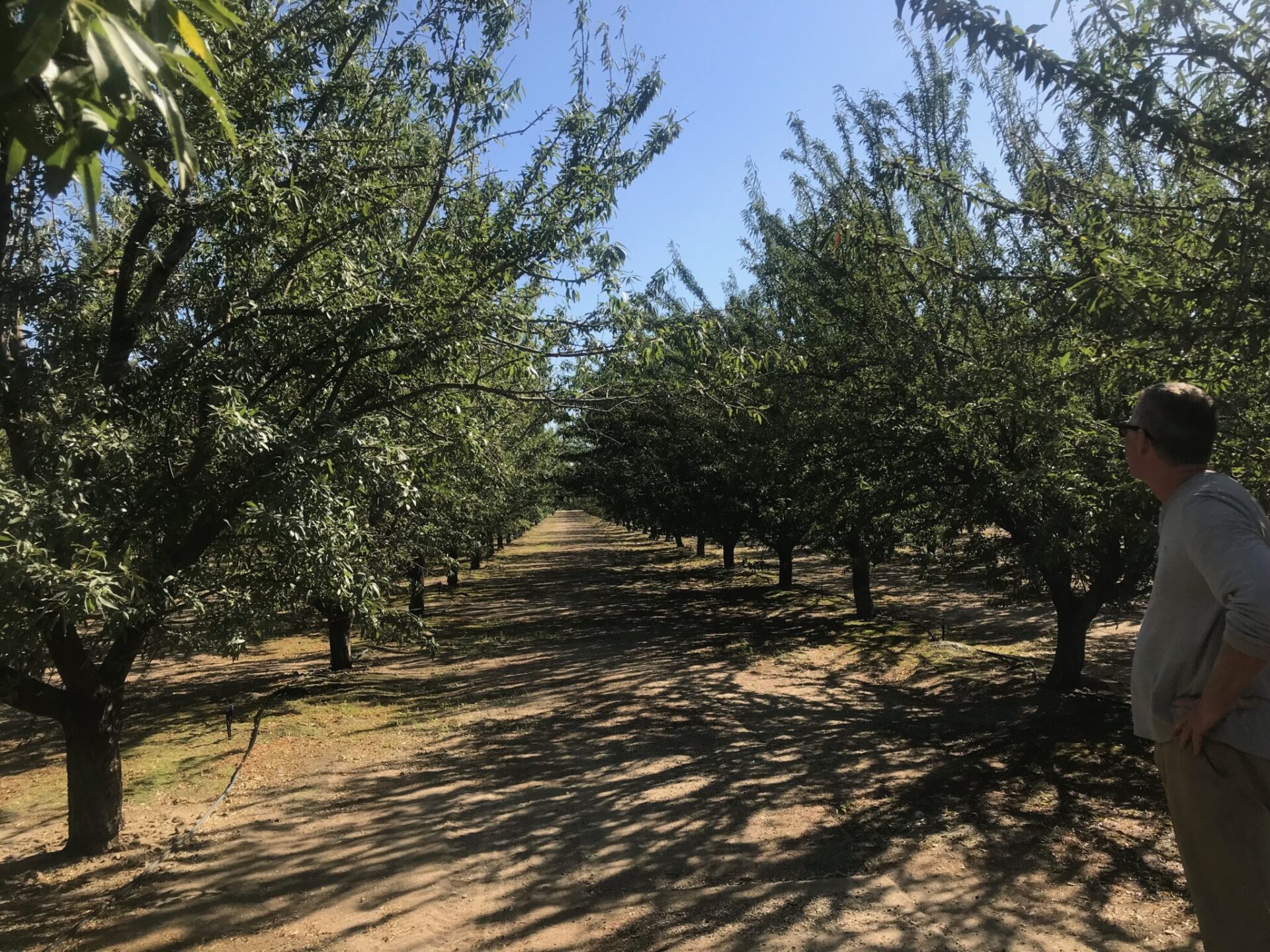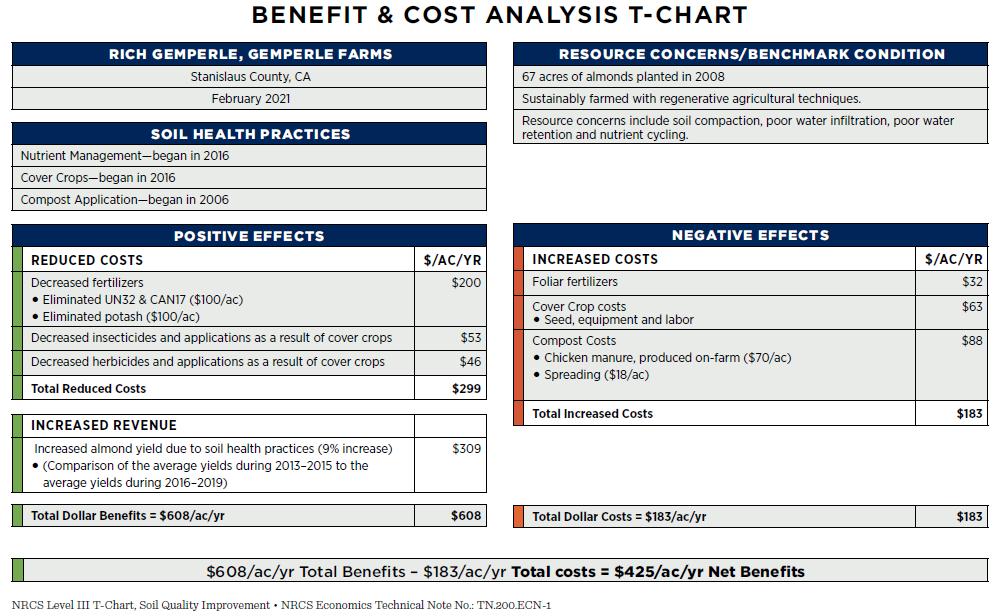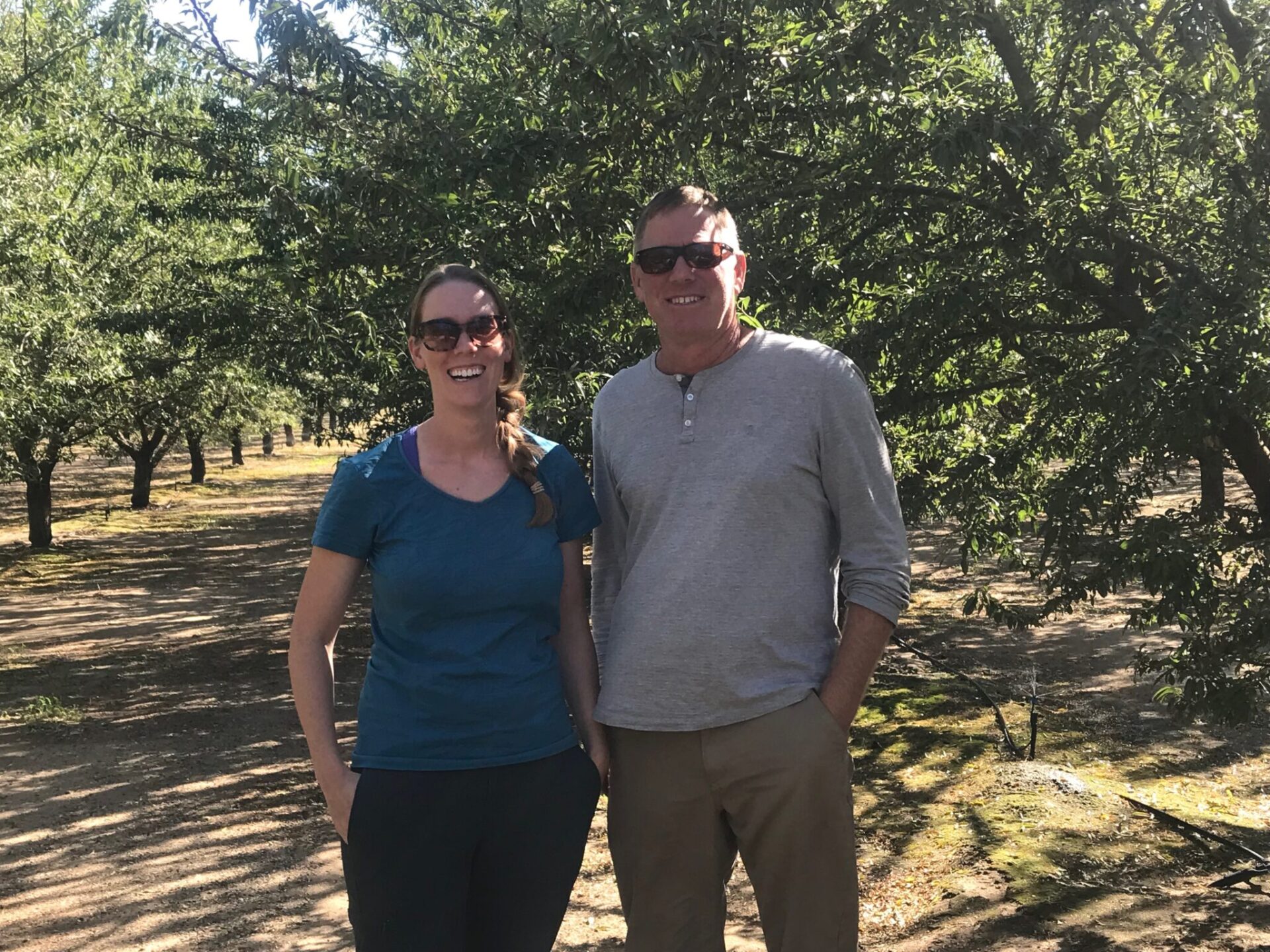
American Farmland Trust (AFT) recently released a Soil Health Farmer Profile of Rich Gemperle, who successfully adopted regenerative farming practices to improve soil health on his orchard. His family grows almonds and owns a large-scale egg business in Stanislaus County. The farmer profile describes the changes Gemperle made to his 67-acre orchard, originally planted in 2008. Gemperle had been applying compost annually, but in 2016, he started planting cover crops and practicing nutrient management. He reports improved soil tilth, water infiltration and increased organic matter content since adopting the practices. The grower also experienced gains in net income through reduced costs and greater yields, and AFT documented the improvement to water quality and carbon sequestration in this farmer profile.
On-farm and university research has demonstrated that healthy, fully functioning soils offer significant benefits to farmers, including greater soil aggregation and structure, improved water holding capacity, water infiltration rates and increased nutrient cycling. As a result, the plants may be healthier and more productive, and growers may experience increased yields and reduced production costs.
AFT recognizes that many growers are hesitant to adopt one or more of these growing methods. They may be uncertain of the benefits or hesitant to take the financial risk of trying something new, especially on leased land. The Gemperle profile expands AFT’s growing library of case studies and farmer profiles nationwide, which provides evidence of how sound farming practices can improve soil health, farm profitability and carbon sequestration to mitigate climate change. AFT has evaluated corn-soybean farms in Illinois and Ohio, diversified farms in New York and wine grapes in California, Oregon and Washington. The Gemperle profile was funded by a competitive grant from USDA’s National Institute of Food and Agriculture.
Evaluation of Practices
To develop the profile, AFT’s California staff interviewed Gemperle and his daughter, Tanya Gemperle-Goncalves, who serves as the farm’s director of sustainability. AFT evaluated the growing practices that were implemented in the orchard. Gemperle explained his growing concerns are soil compaction, poor water infiltration and low nutrient availability. So, he adopted regenerative agricultural practices to improve the orchard’s soil health and enhance the long-term sustainability of the farm.
“We consider how everything we do in the orchard affects the soil and the health of the trees,” Gemperle said. “Since we farm with coarse soils, we do a lot of work to keep the soil alive. Our program of cover crops and composting is well worth the effort and we are seeing numerous benefits, especially with reduced production costs and increases in yield.”
The transition to cover cropping presented early challenges to the Gemperle family. Rich experimented with different planting dates, seed mixes and mowing heights. After several years, Gemperle found a seed mix that worked for him. He plants the Project Apis m. clover mix in every other row of the middles and allows native vegetation to grow in the alternate rows instead of maintaining bare floors. The cover crop and vegetation are terminated by a low mowing pass in early summer in preparation for harvest. The cover crop provides habitat for beneficial insects, suppressing insect pests and allowing Gemperle to reduce reliance on insecticides. Weed competition from the cover crop reduces herbicide use.
AFT calculates the impacts to net income with partial budgeting analysis. Water quality is assessed with the NRCS Nutrient Tracking Tool, and benefits to carbon sequestration or greenhouse gas emissions are evaluated with USDA’s COMET-Farm or COMET-Planner tool.

The combination of cover crops and compost improved soil microbial activity, increased nutrient cycling (nutrient availability) and enhanced soil structure. Gemperle applies four tons per acre of composted chicken manure sourced from the family’s egg business. The improved soil health allows Gemperle to reduce UN-32 and CAN-17 fertilizers and still meet the crop demand. Potassium levels are more stable throughout the growing season, eliminating potash applications.
Gemperle has seen rich benefits from increased yields, and he attributes improved soil health to yield gains of 9% over the past six years. Inflation, tree maturity and annual weather conditions were all considered when evaluating crop yields over time.
Provided is the Benefit & Cost Analysis T-Chart, which captures the changes in costs and yields from 2013 to 2015 (prior to practice adoption) with 2019 (current period of practice adoption). The left column, “Positive Effects”, lists the reduced costs for fertilizers, insecticides and herbicides as well as the increased revenue, resulting in a combined total of $608/acre. The right column, “Negative Effects”, lists the practices that generated increased costs equal to $183/acre. In sum, the net income benefit is equivalent to $425/acre/year.
In addition to the T-Chart analysis, AFT tracked environmental benefits from Gemperle’s adoption of these growing practices. Water quality impact was assessed with USDA’s Nutrient Tracking Tool (NTT), which found a 27% reduction in nitrogen loss and a 58% reduction in sediment loss. A reduction in greenhouse gas emissions was quantified with USDA’s COMET-Farm tool, which estimated a sequestering of carbon equal to 403 CO2 equivalent, or that of 6,660 tree seedlings grown over ten years.
Gemperle says his farming practices will continue to evolve as he learns more about the best methods to manage his orchards. “We want to grow our trees on living soils that are healthy from year-to-year,” he said. “With three generations on the land, we try to farm in ways that sustain the soil over time and benefit the environment.”
Scaling Up Healthy Soil Practices
AFT disseminates these farmer profiles to educate growers that are on the fence about adopting soil health practices. Over the past year, a series of webinars were held for agricultural professionals to provide training on methods to quantify soil health impacts in tree crops and wine grapes.
For more information about past webinars, case studies or profiles, or to discuss soil health practices, please contact Paul Lum, American Farmland Trust California’s Agricultural Specialist, at plum@farmland.org. To read more case studies and profiles, visit farmlandinfo.org/publications/soil-health-farmer-profiles/.











